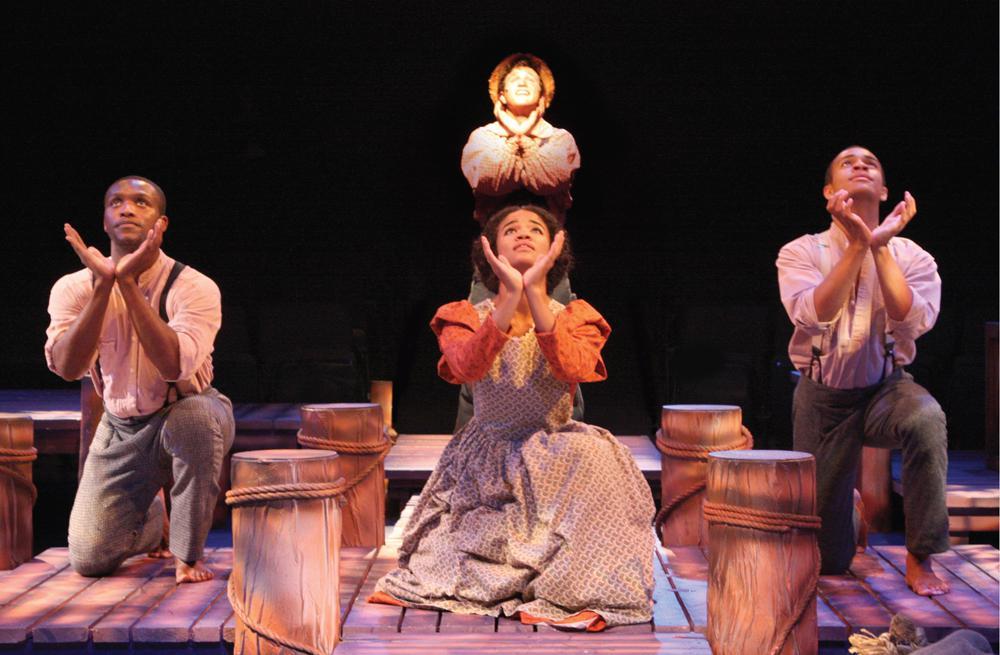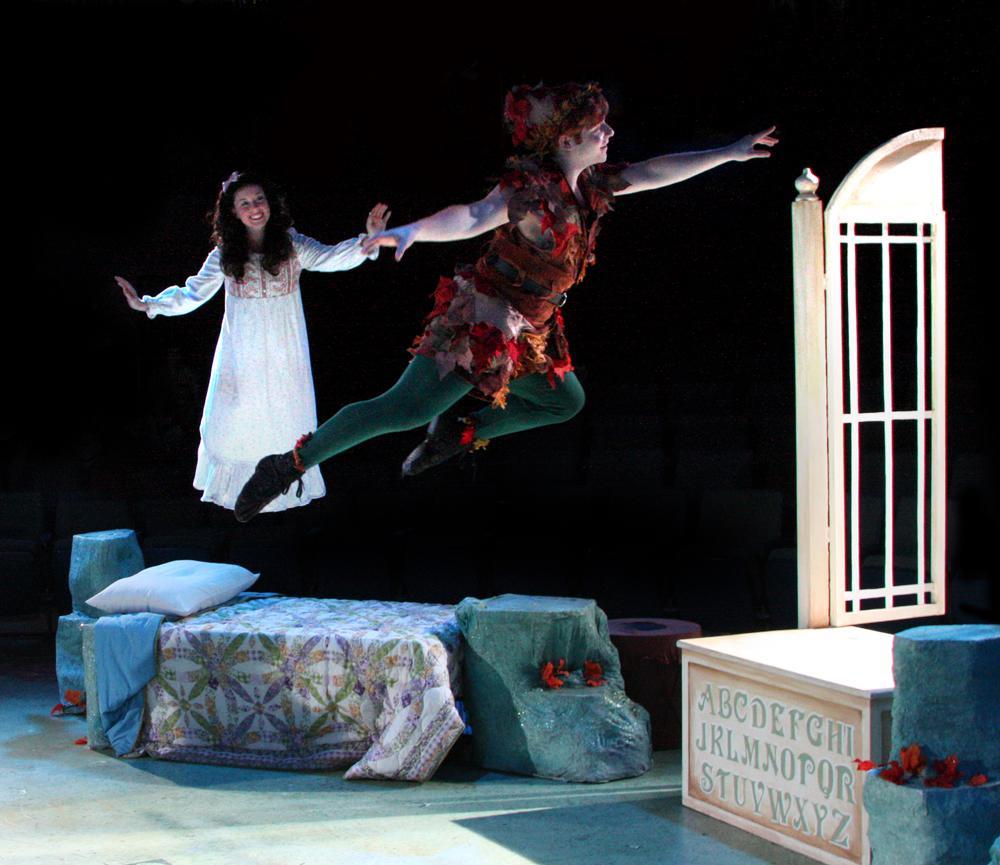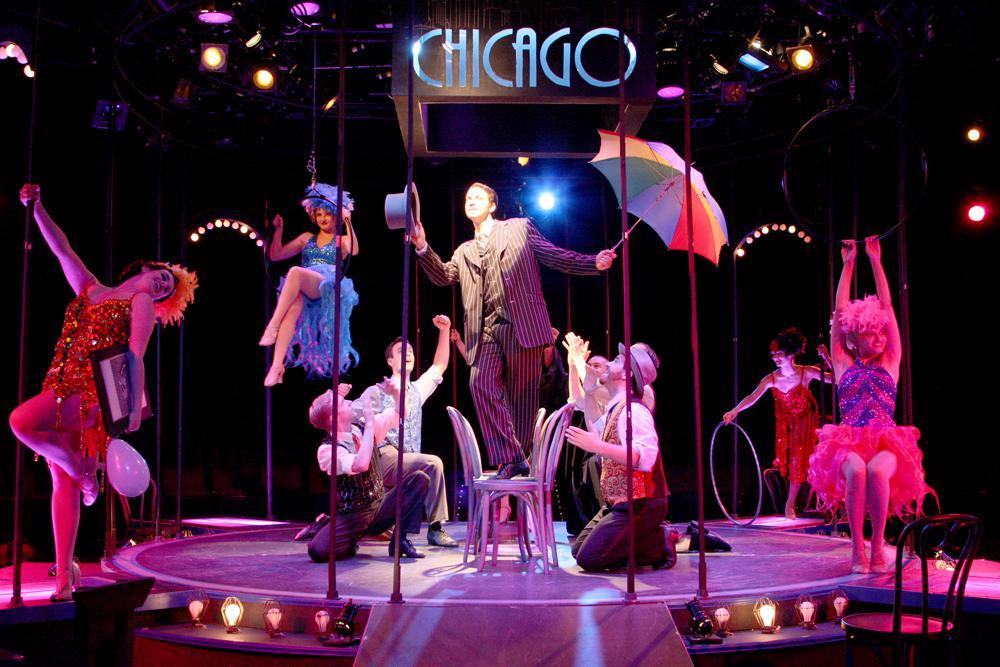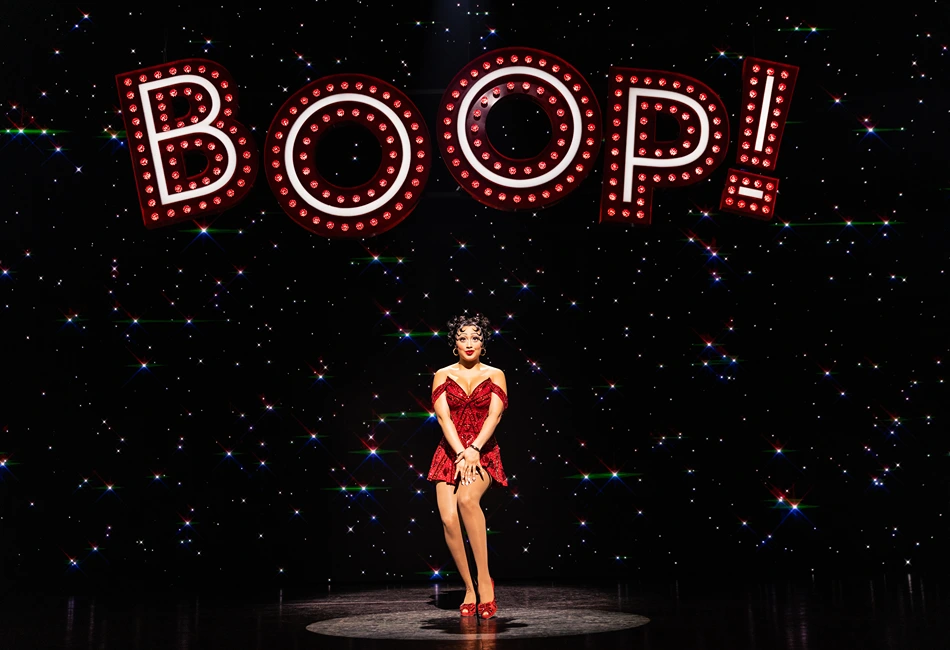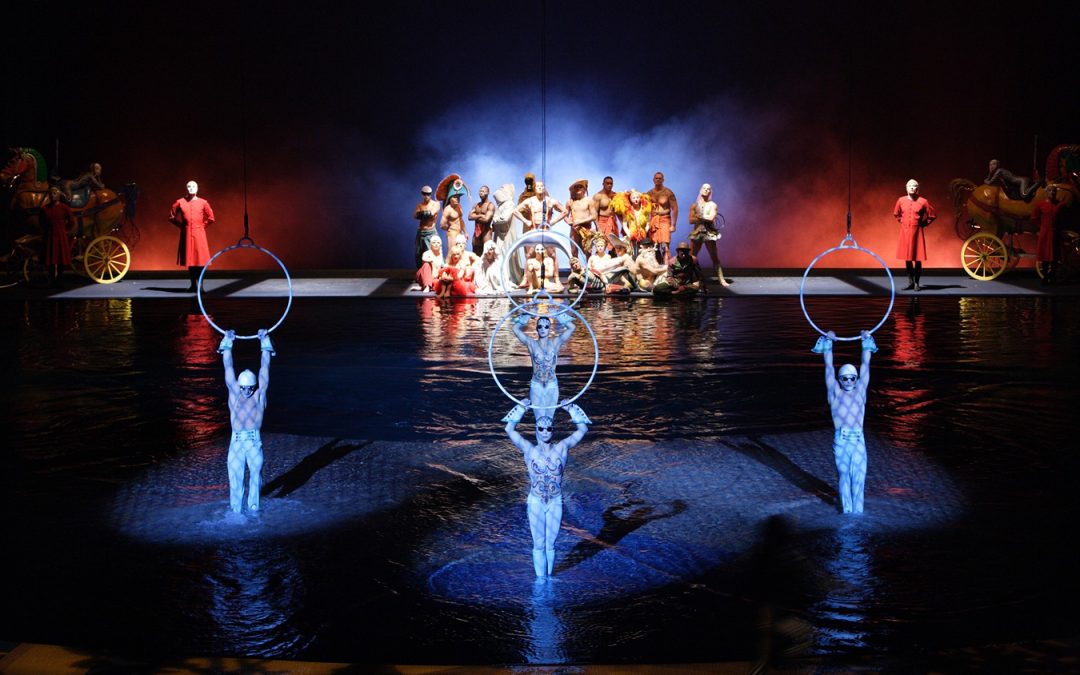At the Wagon Wheel, front row seats are quite close to the action on stage, so close that you may see the actors sweat
Overwhelmed by a rehearsal…
In 1964 I stepped into the Wagon Wheel Theatre in Warsaw, Indiana, and fell in love, long before I traveled to Greece and saw an ancient theater first-hand. I knew that if I was fascinated by a rehearsal of My Fair Lady on a round stage with no scenery or props, costumes or makeup, I would certainly enjoy coming to a performance. I did and I’ve become a fan for life.
Appealed to live theater audiences…
I grew up in a small town nearby in Northern Indiana. A childhood friend invited me to lunch with her as she worked in the Wagon Wheel scene shop the summer of ’64. I was unaware that a military musician with roots in the area had returned to Warsaw, determined to create a new kind of venue…a theater-in-the-round. Major Herbert Petrie had traveled extensively and was especially inspired by the Penthouse Theatre near Seattle, one of the first such theaters in the country.
Brought it home to Warsaw…
A round stage had long been a good design in educational settings, but the proscenium or thrust stages dominated professional entertainment in American cities. Often beginning in a tent with traveling actors providing the show, a theater was located near a resort or Chautauqua-like setting, such as Winona Lake. First named the Wagon Wheel Playhouse in 1956, Petrie and his wife Mildred, a local high school English teacher, opened a theater in a tent. With the help of John and Kitty Butterfield, they also opened a smorgasbord restaurant next door. A touring company of actors, called the Bishop Players, were booked that first summer. The live productions were a variety of drama and comedies like those seen on Broadway stages in New York, and soon included a few musical theater shows like Frank Loesser’s Guys & Dolls and Rodgers and Hammerstein’s South Pacific.
Created a serious plan for the arts…
The regional theater movement was underway, and this venture in Kosciusko County proved quite popular with summer crowds of locals and “lakers” from the Midwest. Within five years, a permanent building was constructed, with seating for 500, and an artistic director was hired. Tom Roland, Professor of Speech/Theatre at Manchester College arrived in 1961 along with Broadway stage experience! He chose excellent shows to present, and began hiring fine non-Equity talent from many music/drama schools including Northwestern, the Cincinnati Conservatory of Music, and Indiana University.
Leaving a legacy…
Petrie decided to retire in 1970 and sold the theater and restaurant, along with an adjoining tract of land, to a group of local businessmen. They chose to bring a Holiday Inn franchise to town, so the complex could then offer entertainment, food, and lodging. At the end of the ’74 season, Tom Roland took a new position at Northwestern University. Herb Petrie died the following year, and a New York director, Jimmy Bohr filled in at the theater for several years. Tom returned in 1982 as Artistic Director of Wagon Wheel and in 1984 ownership of the theater changed again. This time numerous upgrades were made in the original structure and the surrounding parking lots. Those changes made in the early ‘80s opened the door for a year round concert series. In 2005 the Wagon Wheel celebrated its 50th year, under the same management since 1997, when the hotel became a Ramada and again in 2012 when it became a Wyndham Garden.
Staging for the round…
Most live theater productions are written to be performed on a “traditional” stage. However, many can be adapted to the round by skilled set designers and directors and create an intimacy between performers and the audience. When Tom Roland returned to summers at the Wagon Wheel, he engaged technicians he knew from Northwestern. One was a young grad student, Roy Hine, who showed expertise as a set designer…for the round. He continued to design for the stage even after he succeeded Tom as the next Artistic Director in 1996.
Directing for the round…
Not only must the setting be adapted to the round, but so must the actors and the stage crew. Actors’entrances may be made from any of the four directions instead of just left and right. Blocking is vital so that actors know where they should be on the stage at any time, and to add to the confusion, actors may be playing more than one part, requiring costume changes to preserve character identity.
They must project to the audience around them as they interact with each other. And…when the scene is over, they may be required to pick up props when they leave the stage…in the dark. It is the director’s job to look at the overall picture of the production so audiences can enjoy the performance, no matter where they are sitting in the theater. When tragedy hit in 2007 with the unexpected death of Roy Hine, cast and crew were preparing for the holiday show Cinderella. However, Roy had assembled a tight team of professionals and Scott Michaels, the choreographer, stepped up as the next Artistic Director.
Acting in the round…
Many actors who join us are working on their theater related degrees. They are housed for the summer in a variety of places and receive limited pay for the work they do. Auditions are held in various places across the country from some of the nation’s most prestigious performing arts schools. This means the Wagon Wheel stages some of the nation’s preeminent rising talent. In fact, many Wagon Wheel alumni can currently be seen on Broadway’s big stage or national Broadway tours. When auditions are held and actors are chosen for a season, they are informed of the differences between most stages and the round. Some may come with experience in both, and may have prior experience in the shows being presented, but those who are new must learn quickly. Actors need to learn choral and solo music and the choreography designed for each show. The first rehearsal begins two weeks before the season opens, and once a show opens for a two week run, rehearsal for the next show begins the next day. This cast and crew are known for “putting up a show in nine days”! The work is hard and the hours are long and both are required for talented actors to succeed.
Attending in the round…
This can be an adventure for adults and children alike if you are a first-timer, but the intimacy can’t be beat! You should notice that you can see almost everyone in the theater audience. At the Wagon Wheel, front row seats are quite close to the action on stage, so close that you may see the actors sweat. A show with a large cast is often better viewed half-way back to experience the panorama of the space. There are more than 200 seats in each of four Sections 1-4, and ten circular Rows A – J, thus the slogan “Where you’re never more than ten rows from center stage!” As the clock nears performance time, musicians enter and descend a ramp to the orchestra pit under the stage. Without a curtain, nothing is hidden from view. However, dimmed lights throughout the show indicate the end of a scene and allow actors to enter and exit. During a show the actors use the ramps, lobby, and aisles behind the seats to navigate in the dark, and patrons are advised to stay put during a show for their own safety.
Remembering the past…
Some entertainers remember the first theater production they attended and know early on that they want to be an actor. They may attend summer theater workshops and participate in drama and music opportunities at school. They may audition for children’s parts in summer shows at the Wagon Wheel and excel as Scout, or Annie, or Oliver. Many study Theater and Music in college, but like the children, some can also thank the Wagon Wheel Theatre for summer opportunities to hone their craft.
For more travel ideas, download our current issue of Leisure Travel Guide.

